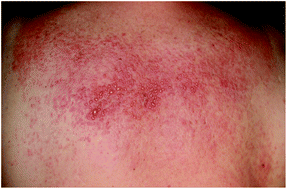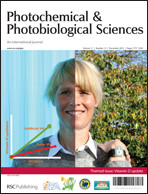Background: Polymorphic light eruption (PLE) is a very common condition whose pathogenesis may involve immunological abnormalities. Vitamin D sufficiency is thought to be important for normal immune function. Objective: To determine whether PLE patients are vitamin D deficient and to study how photohardening with 311 nm UVB affects the vitamin D status of PLE patients. Methods: The vitamin D status of 23 PLE patients (21 females and 2 males; age range, 18–55 years) was analysed at four different time points (early spring, late spring, summer, and winter) by measuring 25-hydroxyvitamin-D3 (25(OH)D) serum levels through a standardised immunoassay. Fifteen of those patients received 311 nm UVB in early spring for prevention of PLE symptoms. 25(OH)D levels of the PLE patients were compared to that of 23 sex-, age-, and body-mass-index post hoc-matched control subjects. Results: PLE patients had low levels of 25(OH)D throughout the year compared to that of the control subjects. At baseline in early spring, the mean ± SD 25(OH)D level was 14.9 ± 3.0 ng ml−1 in the PLE patients that would later receive 311 nm UVB and 14.4 ± 2.4 ng ml−1 in the patients not receiving 311 nm UVB. Successful prophylactic treatment with 311 nm UVB significantly increased 25(OH)D levels to a mean of 21.0 ± 3.4 ng ml−1 (p < 0.001; ANOVA, Tukey's test). Heading into summer, the 25(OH)D levels in treated patients decreased again, reaching their lowest levels in winter. In contrast, the 25(OH)D levels of untreated PLE patients stayed in the low range in early and late spring but increased by trend towards summer, reaching similar levels to that of the PLE patients who had received 311 nm UVB (17.1 ± 2.3 vs. 17.3 ± 6.0 ng ml−1). Like the treated PLE patients, 25(OH)D levels of untreated patients significantly decreased in winter to comparable levels (12.2 ± 1.9 vs. 13.8 ± 1.8 ng ml−1). Taken together, the 25(OH)D levels of PLE patients were significantly lower at all time points than that observed in the matched control population (34.4 ± 12.5 ng ml−1) (p < 0.000003). Conclusions: PLE patients have low 25(OH)D serum levels. 311 nm UVB phototherapy that prevented PLE symptoms increased those levels. Thus, we speculate that boosting levels of vitamin D may be important in ameliorating PLE.

You have access to this article
 Please wait while we load your content...
Something went wrong. Try again?
Please wait while we load your content...
Something went wrong. Try again?


 Please wait while we load your content...
Please wait while we load your content...